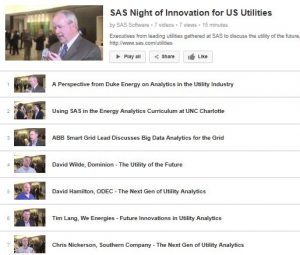Ask a utility executive about “the utility of the future” and you’re likely to get as many different answers as people you speak to. Whether they’re energy service providers, customer energy advocates or masters of microgrids, the mechanism for maintaining utility revenues is uncertain.
At a recent meeting of the GridEdge Executive Council, we prioritized a list of the top 5 disruptive forces that could affect the utility business and shake up “business as usual.” These are the five issues that rose to the top of the list:
- Increased rapid adoption of distributed generation.
- Rapid customer-sited energy storage adoption.
- Regulatory overhaul leading to new utility business models.
- Internet of Things (both for grid operations and customer energy management).
- Increasing grid defection.

The discussion among council members echoed what I’ve been hearing from utilities this year: Technologies at the edge of the grid are seeing unprecedented adoption. At the same time, utilities are trying to rationalize back-office systems. A big shift is underway in utility technology.
While the IT landscape is as uncertain as the “utility of the future,” it’s clear that utilities are becoming more data-driven, corporate strategy is evolving, and more analytic talent is needed within every organization.
These were the insights shared by Duke Energy and other leading utilities at the SAS Night of Innovation. If you missed the event earlier this year, you can watch a few highlights with this YouTube series of short interviews about the utility of the future.
Pressures Inside and Out
In some US states, regulators are playing a strong role in the evolution of the utility business, including California, Hawaii, and Massachusetts. In other countries, such as Japan and India, the wave of deregulation is forcing a more customer-oriented mindset.
Utilities are facing a “great crew change,” as seasoned engineers pass the baton to greener employees. Valuable experience is literally walking out the door.
The rise of the prosumer also is changing the utilities landscape. Prosumers are customers who put solar panels on the roof and either use the energy themselves or sell it back to the power company, depending on the price signals at the time of consumption. IDC estimates that more than 3 million Europeans now generate their own electricity.
Steady state
Utilities must manage the pressures of today while keeping one eye on the horizon. For more information on how utilities are using SAS today to improve forecasting and data visualization, download Innovate and Optimize: The Power of Analytics in Today’s Utility.
